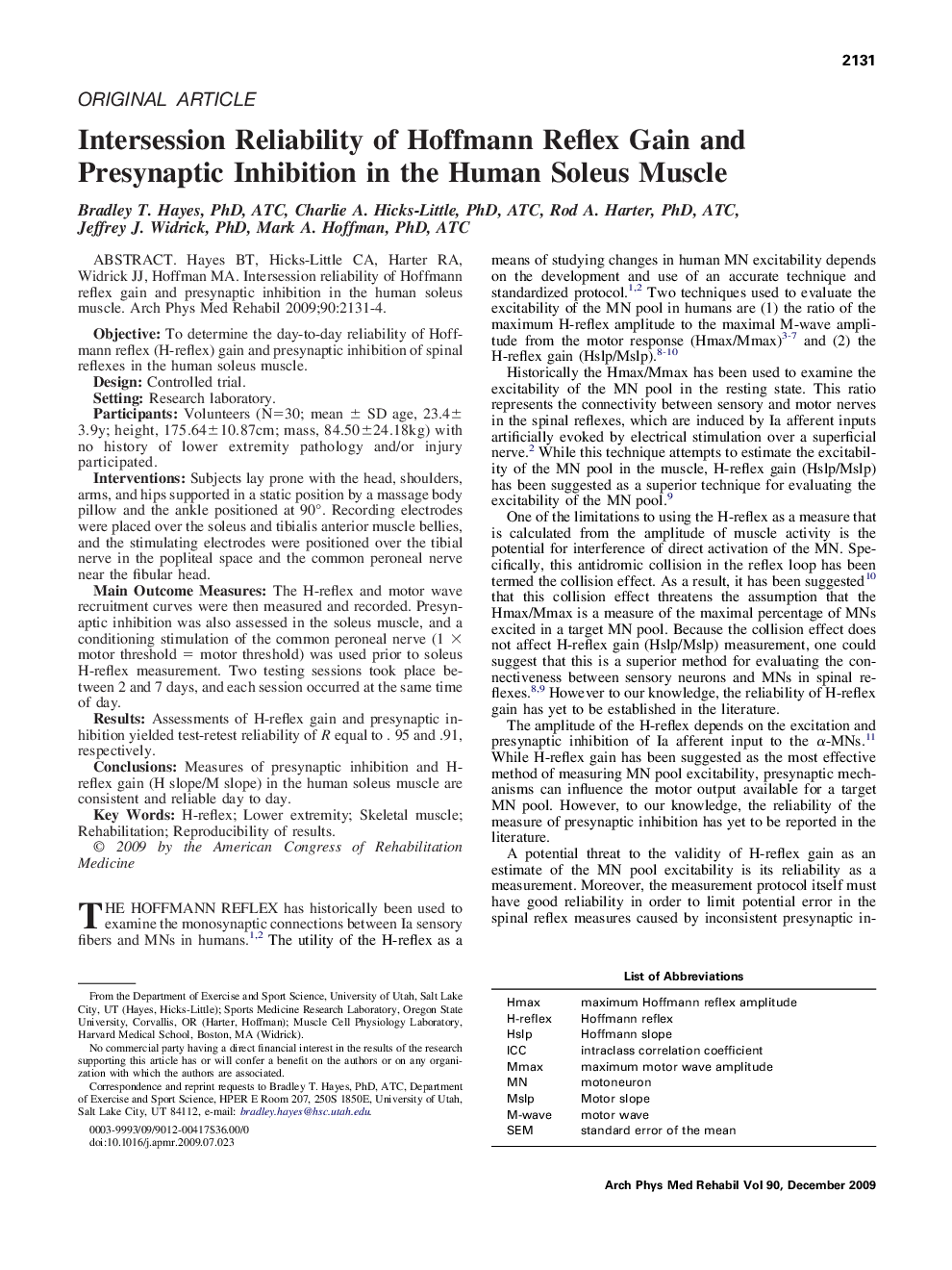| Article ID | Journal | Published Year | Pages | File Type |
|---|---|---|---|---|
| 3449383 | Archives of Physical Medicine and Rehabilitation | 2009 | 4 Pages |
Hayes BT, Hicks-Little CA, Harter RA, Widrick JJ, Hoffman MA. Intersession reliability of Hoffmann reflex gain and presynaptic inhibition in the human soleus muscle.ObjectiveTo determine the day-to-day reliability of Hoffmann reflex (H-reflex) gain and presynaptic inhibition of spinal reflexes in the human soleus muscle.DesignControlled trial.SettingResearch laboratory.ParticipantsVolunteers (N=30; mean ± SD age, 23.4±3.9y; height, 175.64±10.87cm; mass, 84.50±24.18kg) with no history of lower extremity pathology and/or injury participated.InterventionsSubjects lay prone with the head, shoulders, arms, and hips supported in a static position by a massage body pillow and the ankle positioned at 90°. Recording electrodes were placed over the soleus and tibialis anterior muscle bellies, and the stimulating electrodes were positioned over the tibial nerve in the popliteal space and the common peroneal nerve near the fibular head.Main Outcome MeasuresThe H-reflex and motor wave recruitment curves were then measured and recorded. Presynaptic inhibition was also assessed in the soleus muscle, and a conditioning stimulation of the common peroneal nerve (1 × motor threshold = motor threshold) was used prior to soleus H-reflex measurement. Two testing sessions took place between 2 and 7 days, and each session occurred at the same time of day.ResultsAssessments of H-reflex gain and presynaptic inhibition yielded test-retest reliability of R equal to . 95 and .91, respectively.ConclusionsMeasures of presynaptic inhibition and H-reflex gain (H slope/M slope) in the human soleus muscle are consistent and reliable day to day.
